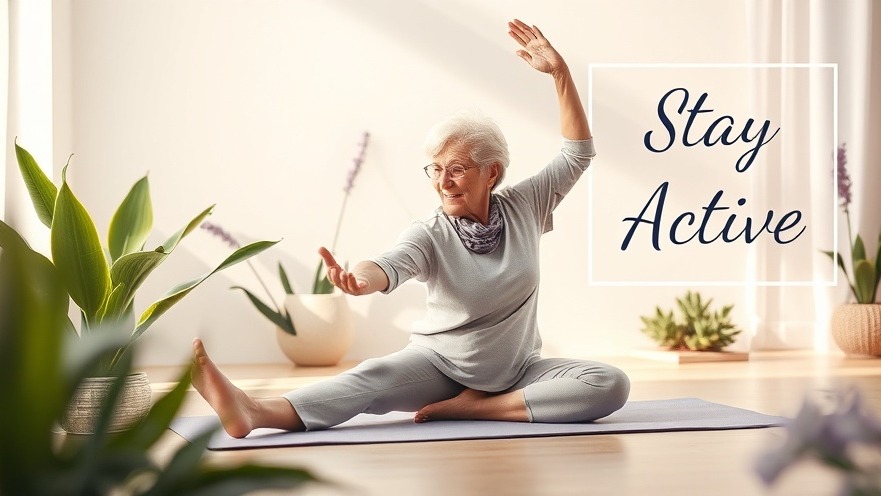
Understanding Osteoarthritis and Osteoporosis: A Quick Overview
Osteoarthritis and osteoporosis are two chronic conditions that significantly impact many seniors. Osteoarthritis is a degenerative disease where the cartilage around the joints wears down, leading to pain and inflammation. Conversely, osteoporosis makes bones brittle and weak, increasing the risk of fractures. Both conditions complicate physical activity, yet they also necessitate effective management strategies through exercise and lifestyle choices.
In 'Osteoporosis & Arthritis? 3 Safe Exercise Tips You NEED!', the discussion dives into crucial exercise approaches for seniors facing these challenges, sparking deeper insights on how to manage dual conditions effectively.
Exercise Tip #1: Embrace Walking as Part of Your Daily Routine
Establishing a walking program is crucial for individuals dealing with both osteoarthritis and osteoporosis. Experts recommend aiming for a goal of 7,500 steps daily. Although some seniors may find this number daunting, tracking daily steps can transform walking into a manageable and rewarding habit. Using a pedometer or a simple calendar can keep you motivated. Low-impact as it is, walking preserves bone density while being gentle on our joints. If recurrent pain or stiffness arises, simple adjustments like using a cane or wearing supportive braces can help continue this vital form of exercise without exacerbating pain.
Exercise Tip #2: Strength Training for Support and Growth
In addition to walking, it's vital to incorporate strength training into your exercise regimen—aiming for at least two to three sessions a week. As muscles around the joints strengthen, they relieve some of the burdens on these often painful areas. Strength training also improves bone mass density, which is essential for combating osteoporosis. For seniors, it doesn't have to be intimidating—start with simple exercises, perhaps utilizing weights that can be done while seated or even using resistance bands. With modest adjustments, seniors can effectively strengthen their muscles without overstraining arthritic joints.
Exercise Tip #3: Proactive Management of Arthritis
Managing an arthritic joint requires a proactive approach. Diet plays a crucial role here; avoiding processed foods, sugar, and excessive alcohol can drastically reduce inflammation. On the tech side, innovations like red light therapy have shown promise in reducing arthritic pain and improving joint function. This therapy utilizes red light waves to penetrate the skin, stimulating blood flow and thus promoting healing—an excellent complement to physical activity.
The Importance of Combining Traditional Methods with Emerging Tech
Integrating traditional lifestyle advice—like mindful eating and physical activity—with innovative approaches offers a well-rounded strategy for managing these chronic conditions. For example, using devices like the Pruno red light therapy unit can provide non-invasive treatment options that enhance and expedite recovery after exercise. Many individuals report lower pain levels and improved mobility when incorporating this therapy into their routine.
Seek Support and Resources for Better Health
Finding fellow participants in exercise classes, either in-person or online, can significantly bolster your motivation. Remember, building a community support network fosters an environment of encouragement and shared experiences. Seek resources and talk with healthcare providers about integrating supportive therapies to tailor an exercise plan that aligns with personal health needs.
Final Thoughts: The Journey of Managing Osteoarthritis and Osteoporosis
Managing osteoarthritis and osteoporosis may seem like a daunting journey, yet it can be navigated with the right approach and mindset. By committing to daily walking, integrating strength training exercises, maintaining a nutritious diet, and considering innovative therapies, seniors can greatly enhance their quality of life while mitigating discomfort. If you’re intrigued by these avenues for better health, consider taking the next steps to incorporate these practices into your daily routine and join a community that inspires ongoing wellness.
 Add Row
Add Row  Add
Add 




 Add Row
Add Row  Add
Add 

Write A Comment